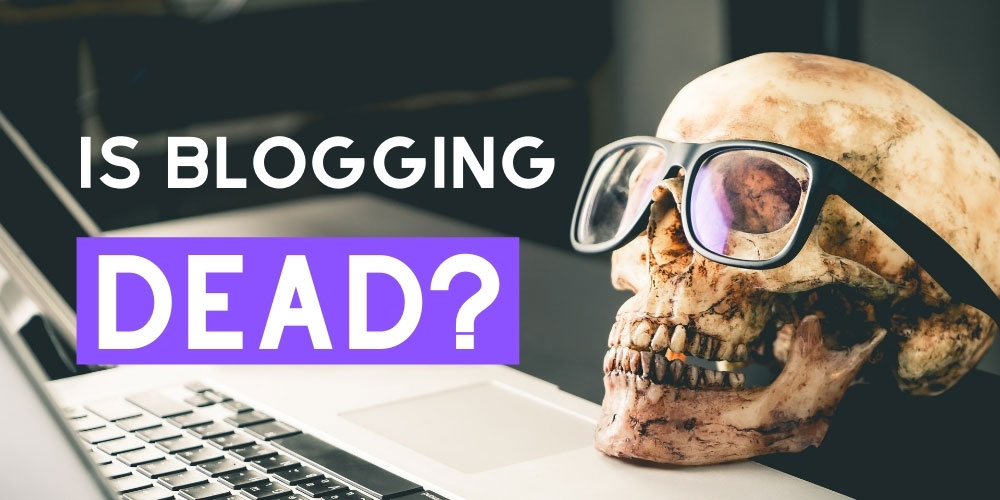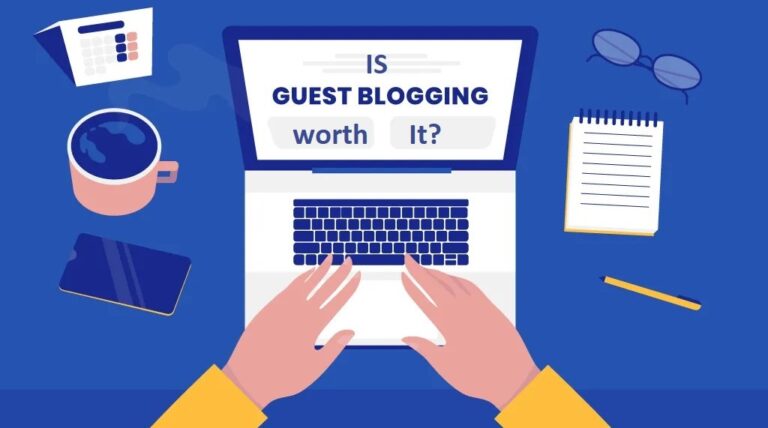Blogging is Evolving Into Something Badass (Don’t Miss Out)

Don’t bury blogging yet – it’s just getting its second wind
Early this year, I was scrolling through my LinkedIn feed (yes, I occasionally venture into the professional hellscape that is LinkedIn) when I stumbled across another “Blogging is Dead” post. Blogging is evolving into something completely different, and this dude was acting like we’re all typing our digital eulogies.
I literally snorted so hard I nearly choked on my Tuesday evening whiskey.
Here’s the thing – and I’m going to be brutally honest with you, because that’s what we do here at Blog Recode – blogging isn’t dying.
It’s shape-shifting like some kind of content marketing superhero, and most people are too busy mourning the “good old days” to notice.
The “Blogging is Dead” Crowd is Missing the Point

Remember when everyone said email marketing was dead?
Or when social media was supposed to kill websites? Yeah, those predictions aged like milk in the sun.
I’ve been watching this space for years, testing tools, breaking stuff, and occasionally having mental breakdowns over analytics (don’t judge me). What I’ve learned is that blogging isn’t disappearing – it’s just refusing to stay in its lane.
Blogging is evolving.
In 2025, 80% of bloggers are using AI, and there are over 700 million blogs across platforms like WordPress, Medium, and LinkedIn. That doesn’t sound like a dying industry to me.
That sounds like an industry that’s finally figured out how to work smarter, not harder.
How Blogging is Evolving (Spoiler: It’s Pretty Cool)
1. AI Integration Isn’t Replacing Writers – It’s Making Them Superhuman
Here’s where people get their panties in a twist.
They think AI means robots are taking over, but a reality check reveals that AI usage among bloggers jumped from almost zero in 2022 to 80% in 2024.

I started experimenting with AI tools about 18 months ago. Not to replace my writing (because let’s be real, no AI can match my particular brand of caffeinated chaos), but to handle the boring shit.
Research, initial outlines, data analysis – you know, the stuff that used to eat up my entire morning.
Most of my friends were initially skeptical. “Mia, you’re gonna lose your voice,” one told me over drinks one Friday night.
But to be honest, AI truly helped me find my voice better. When I’m not spending three hours fact-checking statistics, I can focus on the storytelling that makes people give a damn.
2. Multimedia Integration is Where the Magic Happens

Traditional blogging was just text and maybe a stock photo of someone pointing at a laptop.
Now?
We’re talking interactive content, embedded videos, infographics that don’t suck, and multimedia experiences that make readers actually want to stick around.
Posts with video experienced a 4x increase in engagement, and honestly, I wish I could jump on that bandwagon. But I’m still working on my camera shyness – something about being on video makes me want to hide under my desk like a hermit crab.
For now, I’m focusing on creating visual content that doesn’t require my face.
Interactive infographics, data visualizations, and those satisfying before-and-after screenshots that make people go “ooh.”
3. Content Formats Are Getting Weird (In the Best Way)
How-to articles (76%) and lists (55%) still rank as the most popular blogging formats, but that’s just the tip of the iceberg.
We’ve got:
- Interactive quizzes that actually teach something
- Choose-your-own-adventure style content
- Live-updated posts that change based on real-time data
- Multimedia storytelling that combines text, audio, and visuals
I recently created a “troubleshooting flowchart” post that let readers click through different scenarios. It was a pain in the ass to set up, but engagement went through the roof.
People love feeling like they’re part of the solution, not just passive consumers.
4. The Rise of Niche Expertise Over Generic Content

Here’s something that gets me excited – the death of generic “Top 10 Tips” content.
Marketers who prioritize blogging are 13x more likely to achieve a positive ROI, but only if they’re actually providing value.
I used to try to be everything to everyone. Big mistake. Now I focus on the intersection of blogging, AI tools, and content strategy.
It’s a smaller pond, but I’d rather be a big fish in a small pond than a minnow in the ocean. What do you think about that? Drop a comment.
The Numbers Don’t Lie (And They’re Pretty Damn Impressive)
Let me hit you with some reality checks:
- 71% of B2B buyers consume blog content during their buyer journey
- B2B companies with blogs generate 67% more leads compared to those without
- Bloggers make an average annual salary of $62,275
Those aren’t the numbers of a dying industry. Those are the numbers of an industry that’s figured out how to adapt.
Why Most People Think Blogging is Dead (Hint: They’re Looking in the Wrong Places)
The problem isn’t that blogging is dying – it’s that people are stuck in 2015.
They’re still looking for the same old “lifestyle blogger with perfect Instagram feed” model and missing the evolution happening right under their noses.
Modern blogging is evolving and looks like:
- Industry newsletters with 100K+ subscribers
- LinkedIn thought leadership that drives actual business
- Medium publications that influence entire industries
- Ghost-powered communities that charge $50+/month for access
I made this mistake myself. Two years ago, I was still trying to be a “lifestyle blogger” when what I really wanted was to be a resource for content creators.
It’ the same mistake people are making, claiming that SEO is dead, which is not.
The day I pivoted to focusing on AI tools and content strategy was the day my audience started actually caring about what I had to say.
The Future of Blogging is Bright (If You’re Willing to Evolve)
Immersive technologies like AR, VR, and MR are becoming prominent in content marketing strategies, and while I’m not quite ready to start creating virtual reality content from my studio apartment, the writing is on the wall.
The bloggers who will thrive are the ones who:
- Embrace new technologies without losing their authentic voice
- Focus on solving real problems for specific audiences
- Create content experiences, not just content pieces
- Build communities around their expertise
What This Means for You (The Real Talk Section)
If you’re still approaching blogging like it’s 2018, you’re gonna get left behind.
But if you’re willing to evolve with the medium, there’s never been a better time to be a content creator.
Start small. Pick one new technology or format and experiment with it. Maybe it’s adding interactive elements to your posts. Maybe it’s using AI to help with research. Maybe it’s finally starting that newsletter you’ve been thinking about.
The key is to stay curious and stop mourning the “good old days” of blogging.
They weren’t that good anyway – we just remember them fondly because we were younger and had more time to waste on perfectionism.
Final Take: Blogging’s Not Dead, Blogging is Evolving

Blogging is evolving faster than my ability to keep up with new AI tools (and trust me, that’s saying something).
The creators who recognize this evolution and adapt accordingly are the ones who’ll be laughing all the way to the bank while everyone else is still writing obituaries for a medium that’s nowhere near ready to die.
So the next time someone tells you blogging is dead, just smile and nod. Let them think that while you’re over here building the future of content creation, one evolved blog post at a time.
The revolution will be blogged. It just might look a little different from what you expected.
Questions You Might Ask
1. Is blogging really still profitable in 2025?
Absolutely. Marketers who prioritize blogging are 13x more likely to achieve a positive ROI, and the average blogger’s salary is over $62K annually. The key is adapting to new formats and technologies while maintaining authentic value.
2. How is AI changing blogging?
80% of bloggers now use AI in 2025, primarily for research, content optimization, and handling repetitive tasks. AI isn’t replacing bloggers – it’s making them more efficient and allowing them to focus on creativity and strategy.
3. What types of blog content perform best now?
How-to articles (76%) and lists (55%) remain the most popular formats, but interactive content, multimedia posts, and niche expertise are driving higher engagement and ROI.
4. Should I start a blog in 2025?
If you have expertise in a specific niche and are willing to embrace new technologies and formats, yes. The key is focusing on solving real problems for a specific audience rather than trying to be everything to everyone.
5. How long should blog posts be in 2025?
The average blog post is 1,376 words, but quality matters more than length. Focus on thoroughly addressing your audience’s needs rather than hitting arbitrary word counts.
6. Is video content replacing written blogs?
Posts with video experienced a 4x increase in engagement, but written content remains crucial. The most successful approach combines multiple formats – text, video, interactive elements – rather than relying on just one medium.
Hope you found clarity in this matter, which is being discussed more on Reddit, LinkedIn, and Quora. Don’t be misled, understand better on Blog Recode. Share, follow, and subscribe.





